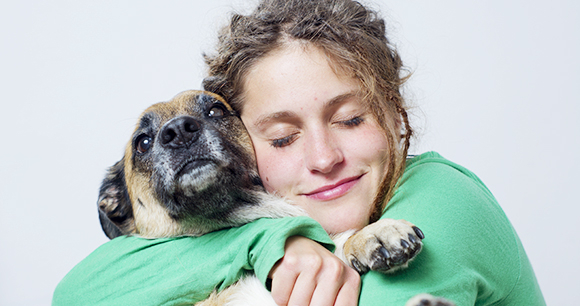
On December 20, 2018, the provisions of the Pet and Women Safety (PAWS) Act were signed into law as part of the 2018 Farm Bill. The PAWS Act establishes a grant program for entities that provide shelter and housing assistance for domestic violence survivors to enable them to better meet the housing needs of survivors with pets. The law also takes the important step of including pets, service and emotional support animals, and horses in federal law pertaining to interstate stalking, protection order violations, and restitution. These provisions provide law enforcement with additional tools for protecting victims from their abusers.
Background
Any member of a household can become a victim of domestic violence: spouses or partners, children, elderly relatives, even companion animals. In fact, many human victims are reluctant to leave if they cannot take their pets with them, for fear of what the abuser might do to their pets. The PAWS Act helps bridge the gap between the tremendous need for services for domestic violence survivors with pets and the ability of agencies to meet those needs.
The Connection Between Domestic Violence and Animal Cruelty
According to the 2023-24 AAPA National Pet Owners Survey, 66 percent of all US households—86.9 million homes—include a companion animal. In most cases, these companions are cherished members of the family. However, when there is violence in the home, it can be directed at the pets as well as the people who live there. Pets are often treasured sources of emotional support, unconditional love, and stability for abused partners and children. Abusers are well aware of the bond between their victims and their companion animals, and they exploit that bond to control, manipulate, frighten, and punish their victims. Because there are few resources for victims with pets, abusers’ threats to harm the pets are often effective, thus locking victims and their companion animals in a cycle of abuse.
Obstacles to Getting Out
This connection between animal cruelty and domestic violence creates an all-too-real obstacle for many survivors who want to leave their abusive partners: the fear that those partners will harm or kill their companion animals. Experience bears out these fears:
- In surveys of women in domestic violence shelters who had pets, roughly half report their pets were abused as well.[1]
- Even though intake interviews do not routinely ask about pets, in a national survey, 85 percent of domestic violence shelters indicated that women coming to their facilities spoke of incidents of pet abuse.[2]
- As many as 48 percent of the battered women responding to surveys said they had delayed leaving a dangerous situation out of concern for their pets’ safety. Some survivors have reported living in their cars with their companion animals rather than leaving them behind.[3]
- When getting out necessitates that they relinquish ownership, survivors “report losing an important source of support as they adjust to separation and recover from violence.”[4]
Providing Help
Removing this roadblock to their leaving is essential to the safety of these survivors. More services are urgently needed to accomplish this. The Pet and Women Safety (PAWS) Act was enacted to respond to this crisis by helping programs provide shelter and housing assistance for the companion animals of domestic violence victims.
The law also takes the important step of including pets in federal law pertaining to interstate stalking, protection order violations, and restitution, and urges states to allow pets to be included under protection orders (as 42 states, the District of Columbia, and Puerto Rico have already done).[5] These provisions provide law enforcement with additional tools for protecting victims from their abusers.
Clearly, shelters and other service providers will be better able to bring everyone to safety if they are better able to help domestic violence survivors find safe places for their pets. The PAWS Act significantly increases the capacity of such providers to meet these many critical needs. According to a scientist who has studied the issue, programs that help provide safekeeping for pets “empower abused women. When a woman who has been victimized makes a decision to protect a beloved pet, she’s not a victim, and that’s important."[6]
[1] Ascione, F.R., Weber, C.V., Thompson, T.M., Heath, J., Maruyama, M., and Hayashi, K. (2007). Battered pets and domestic violence: Animal abuse reported by women experiencing intimate violence and by non-abused women. Violence Against Women, 13, 354-373, and Hardesty, J.L., Khaw, L., Ridgway, M.D., Weber, C., and Miles, T. (2013) Coercive control and abused women’s decisions about their pets when seeking shelter.Journal of Interpersonal Violence 28(3), 2617-2639.
[2] Ascione, F.R., Weber, C.V., & Wood, D.S. (1997). The abuse of animals and domestic violence: A national survey of shelters for women who are battered. Society and Animals 5(3), 205-218.
[3] Flynn, C.P. (2000). Woman’s best friend: Pet abuse and the role of companion animals in the lives of battered women. Violence Against Women 6, 162-177.
[4] Hardesty, et al., op. cit.
[5] Contact the Animal Welfare Institute for a complete list. (Email [email protected])
[6] “Why won’t she leave him? Abused women often fear for pets left behind” http://www.sciencedaily.com/releases/2013/09/130925185309.htm